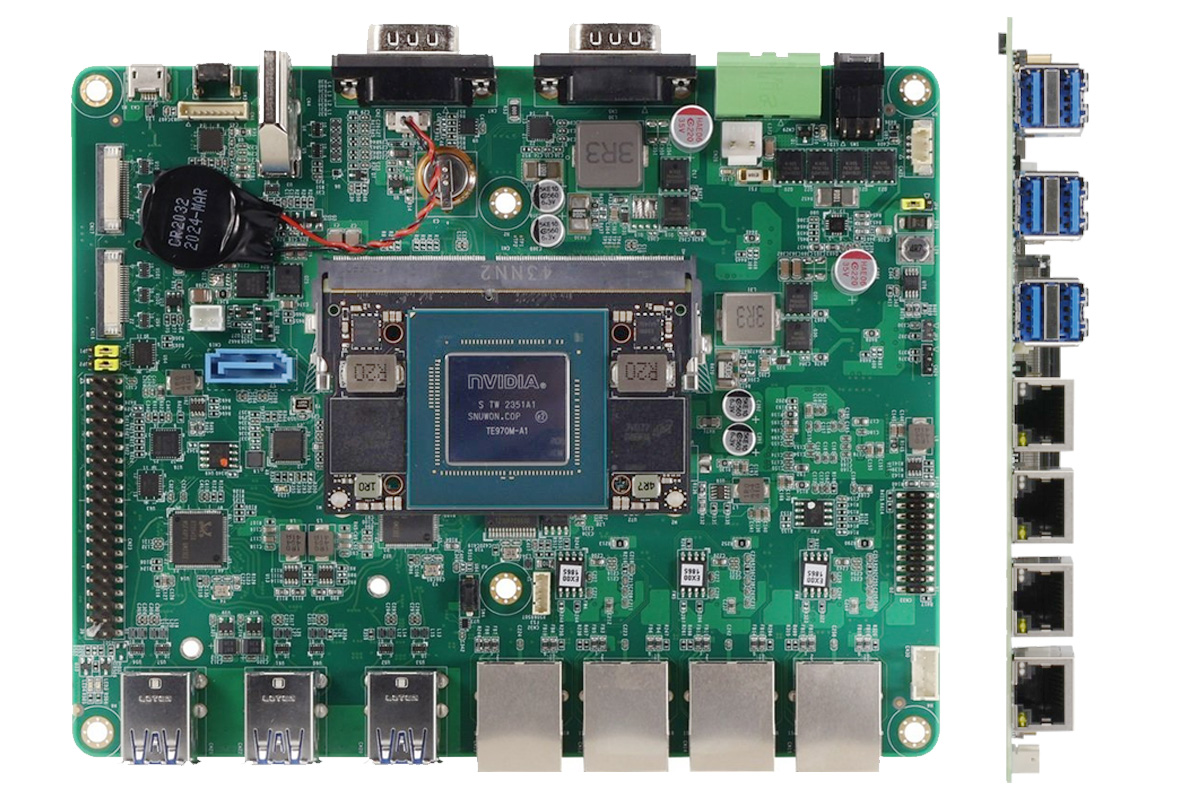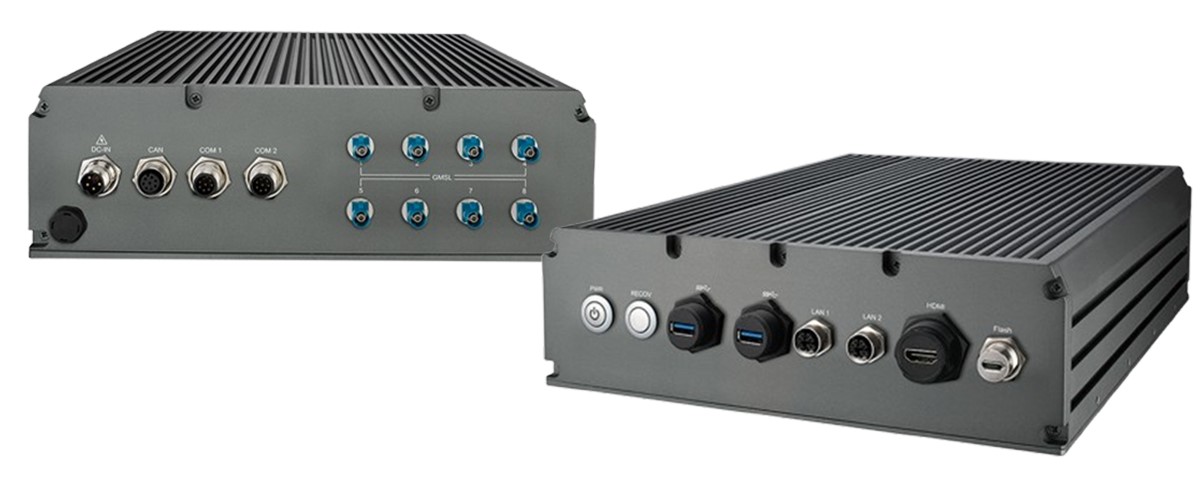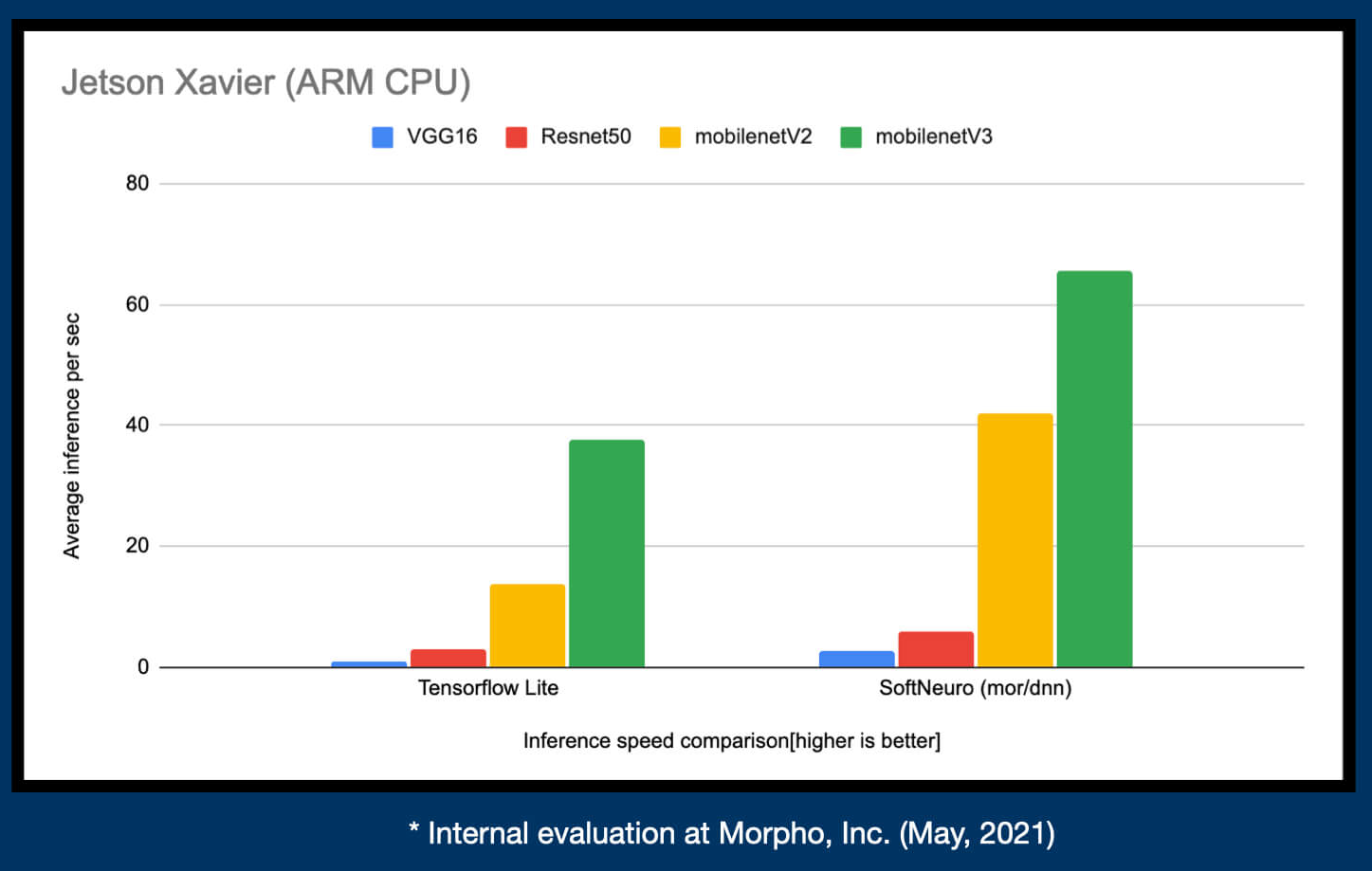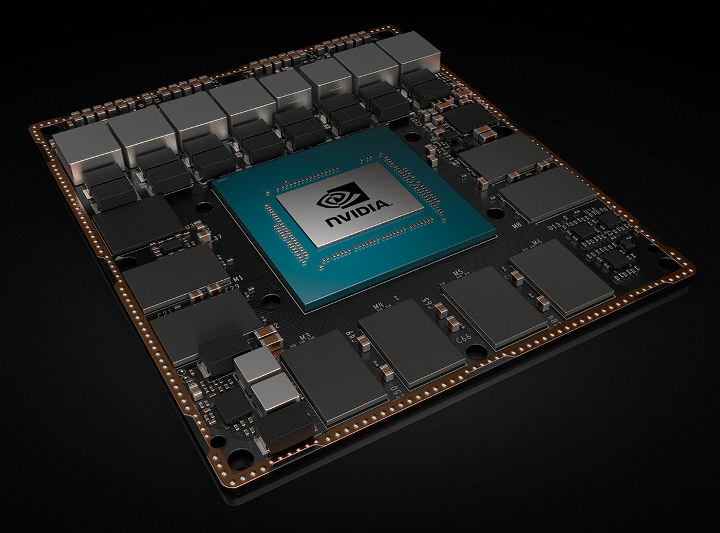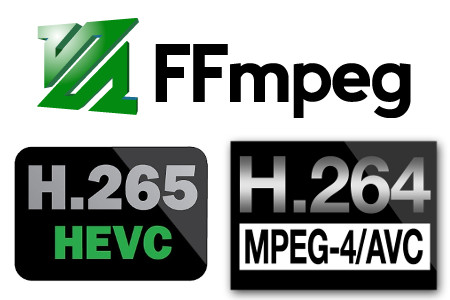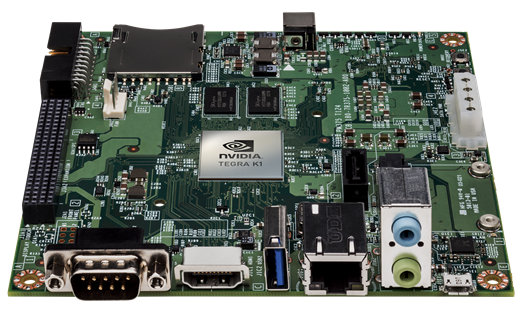The AAEON BOXER-8654AI-KIT Edge AI kit is a compact development kit built around the NVIDIA Jetson Orin NX modules with four gigabit Ethernet ports (with optional PoE) and an Out-of-Band (OOB) management header, and designed for applications like smart cities, IoT ecosystems, edge AI, and others. The multi-functional carrier board also offers six USB 3.2 Gen 2 ports, HDMI video output, two MIPI CSI, two DB-9 ports for RS-232/422/485 and CAN Bus, and a 40-pin NVIDIA Jetson-compatible GPIO header for I2C, SPI, and UART interfaces. Expansion options include M.2 E and B-key slots for Wi-Fi and 5G modules (with onboard SIM), an M.2 M-Key slot for NVMe SSDs, and a SATA connector. AAEON BOXER-8654AI-KIT specifications SoM – NVIDIA Jetson Orin NX module CPU 8GB Version – 6-core Arm Cortex-A78AE v8.2 64-bit CPU, 1.5MB L2 cache + 4MB L3 cache 16GB Version – 8-core Arm Cortex-A78AE v8.2 64-bit CPU, 2MB L2 […]
Vecow RAC-1000 rugged Edge AI systems feature NVIDIA Jetson AGX Orin, waterproof ports, GMSL2 camera connectors
Vecow’s RAC-1000 series Edge AI systems are powered by NVIDIA Jetson AGX Orin 32GB or 64GB system-on-modules, offering up to 275 TOPS of AI performance. These systems are energy-efficient and come with rugged I/O options and an IP67-rated enclosure, making them suitable for AI and robotics applications such as automated agricultural machinery, construction automation, and mobile robotics in extreme outdoor conditions. The series includes two models: the RAC-1000, which supports 8 GMSL2 cameras through FAKRA-Z connectors for autonomous mobile robots, agricultural vehicles, and ADAS; and the RAC-1100, which features 6 GigE LAN ports with 4 PoE+ for vision AI applications. Both models are built for industrial environments and support various AI-driven tasks. As you may know, we’ve previously covered several Vecow AI computing systems, including EAC-5000, EVS-3000, TGS-1000 Series, SPC-9000 fanless embedded system, ECX-3200, and EPBC-1000. Feel free to explore these options if you’re interested. The Vecow RAC-1000 series specifications: […]
Download a free trial of the SoftNeuro Deep Learning SDK for Intel and Arm targets (Sponsored)
Morpho, a global research & development company established in Japan in 2004 and specialized in imaging technology, is now offering a free trial for the SoftNeuro deep learning SDK working on Intel processors with AVX2 SIMD extensions, 64-bit Arm targets, while also leveraging OpenCL and/or CUDA. Some of the advantages of SoftNeuro are that the framework is easy to use even for those without any knowledge about deep learning, it’s fast thanks to the separation of the layers and their execution patterns, and it can run on several different hardware and OS being cross-platform. SoftNeuro relies on its own storage format (DNN format) to deliver the above advantages. But you can still use models trained with any mainstream deep learning framework. TensorFlow and Keras models can be directly converted to the DNN format, while models from other frameworks can be converted first to the ONNX format and then to the […]
NVIDIA Introduces Jetson Xavier Devkit and Isaac Robotics Software
NVIDIA Xavier was first unveiled in September 2016 as an artificial intelligence SoC with eight NVIDIA Custom 64-bit Arm cores, a 512-core Volta GPU, 8K video encoding and decoding, and a computer vision accelerator (CVA) now called NVDLA (NVIDIA Deep Learning Accelerator). Earlier this year, the company announced Xavier was sampling, and DRIVE IX & DRIVE AR SDKs for the automotive market. On the eve of Computer 2018, NVIDIA has introduced Jetson Xavier development kit, as well as Isaac robotics software for autonomous machines. Jetson Xavier key specifications: SoC – NVIDIA Xavier with 8-core ARMv8.2 64-bit CPU, 8MB L2 + 4MB L3 512-core Volta GPU with Tensor Cores 2x NVDLA engines for deep learning 7-way VLIW Processor for vision acceleration VPU with dual 4Kp60 video decoding and encoding System Memory – 16GB 256-bit LPDDR4x | 137 GB/s Storage – 32GB eMMC 5.1 flash Display – 3x eDP/DP/HDMI at 4Kp60 | […]
FFmpeg 3.1 adds support for OpenMAX encoding on Raspberry Pi, VA-API H.264 & H.265 Encoding, and more
FFmpeg is an open source multimedia framework used by many open source, as well as closed source, projects to handle audio and video containers parsing, hardware or software video decoding / encoding, and more. I also used it a few months ago to test H.265 hardware encoding with an Nvidia GPU using the development branch, but the developers have now released FFmpeg 3.1 “Laplace”, so it’s possible to use a stable release to perform H.265 hardware encoding. Some of the most noticeable features of the new version include: Generic OpenMAX IL H.264 & MPEG4 encoders for Raspberry Pi VA-API accelerated H.264/HEVC/MJPEG encoding VAAPI-accelerated format conversion and scaling Native Android MediaCodec API H.264 decoding CUDA (CUVID) HEVC & H.264 decoders CUDA accelerated format conversion and scaling DXVA2 accelerated HEVC Main10 decoding on Windows Many new muxers/demuxers A variety of new filters The complete list of changes for FFmpeg 3.1 can be […]
Autonomous Deep Learning Robot Features Nvidia Jetson TK1 Board, a 3D Camera, and More
Autonomous, a US company that makes smart products such as smart desks, virtual reality kits and autonomous robots, has recently introduced a deep learning robot that comes with a 3D camera, speaker and microphone, Jetson TK1 board, and a mobile base. The robot appears to be mostly made of the shelves parts: 3D Depth camera – Asus Xtion Pro 3D Depth Camera Speaker & Microphone Nvidia Jetson TK1 PM375 board – Nvidia Terra K1 quad-core Cortex A15 processor @ 2.3 GHz with a 192-core Kepler GPU, 2GB RAM, 16 GB flash Kobuki Mobile Base – Kobuki is the best mobile base designed for education and research on state of the art robotics. Kobuki provides power supplies for external computer power as well as additional sensors and actuators. Its highly accurate odometry, amended by calibrated gyroscope, enables precise navigation. The robot is designed for research in deep learning and mobile robotics, […]
Nvidia to Give Away 50 Jetson TK1 Development Boards
Nvidia Jetson TK1 is a development board powered by Tegra K1 quad core Cortex A15 SoC including a 192-core Kepler GPU. This is one the the best, if not the best, ARM platform when it comes to GPU performance, GPGPU capabilities, and the only one I know of that supports OpenGL 4.4 “Desktop”, as well as Nvidia’s CUDA 6.0. You can buy the board for $192, but if you are a developer and have a project that could leverage and showcase Tegra K1 capabilities for computer vision solutions for robotics, medical devices, military, and automotive applications, you may well get one board for free via Nvidia’s Tegra K1 CUDA Vision Challenge. To apply, you need to submit your proposal via Nvidia’s TK1 vision challenge page by April 30, 2014. Please note, the contest is only open to US residents. The company will then consider the various proposals based on innovativeness, […]
$192 Nvidia Jetson TK1 Development Board with Tegra K1 Quad Core Cortex A15 SoC
Nvidia has just unveiled Jetson TK1 development kit powered by their 32-bit Tegra K1 quad core Cortex A15 processor with a 192-core Kepler GPU. This board targets computer-vision applications for robotics, medical, avionics, and automotive industries that can leverage the compute capabilities of the Kepler GPU. Jetson TK1 devkit specifications: SoC – Nvidia Tegra K1 SoC with 4-Plus-1 quad-core ARM Cortex A15 CPU, and Kepler GPU with 192 CUDA cores (Model T124) System Memory – 2 GB x16 memory with 64 bit width Storage – 16 GB 4.51 eMMC memory, SATA data + power ports, full size SD/MMC slot, and 4MB SPI boot flash. Video Output – HDMI port Audio – ALC5639 Realtek Audio codec with Mic in and Line out Connectivity – RTL8111GS Realtek GigE LAN USB – 1x USB 2.0 OTG port, micro AB, 1x USB 3.0 port, A Debugging – RS232 serial port, JTAG Expansion 1x Half […]


